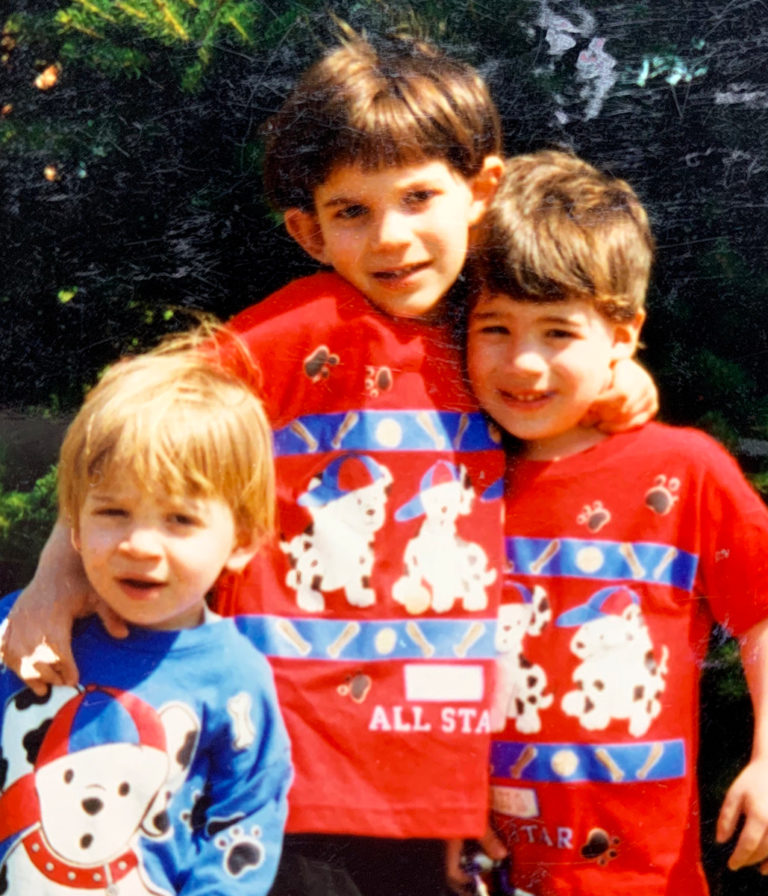Autism Spectrum: “John”
John was talking at 9 months old, saying “stop” at each stop sign we passed on the road, and saying “clock” as we passed his favorite large clock on a building near our home. He waved goodbye to his favorite babysitter at 8 months old. He walked at 12 months old. Then he began his fall into the world of Autism in January 2002, when he received six vaccinations in one day, all of which contained mercury. Within a week he developed terrible gastrointestinal symptoms. Within a month he had stopped talking. Over the next six months, he stopped making eye contact and retreated to his own corner of the family room to turn over a toy truck and watch its wheels spin.
At 2 years old John was officially diagnosed with autism. We began the typical battery of therapies including speech, occupation and applied behavior analysis (ABA). Some gains were made, but still our hope for any type of normal life was dismal. In the fall of 2003, at the age of 3, we were introduced to NACD. Bob Doman assessed John at that time and found his developmental level to be that of an 18-month old child. Some of his most interfering symptoms included constant visual and auditory “stimming”, sound sensitivity, oral sensitivity, poor quality and limited quantity of speech, low muscle tone in his arms, and difficulty with fine motor skills such as holding a crayon.
The first thing we noticed when we received our initial NACD program was that it encompassed activities from many of the disciplines that we had been already been doing with John, such as deep pressure techniques in occupational therapy and oral motor exercises from speech therapy. However, we quickly recognized that the NACD program was much more comprehensive and intensive. It started to make sense that 30 minutes of speech therapy once or twice a week by a therapist that didn’t know John very well would not bring the desired results. The idea that short, frequent activities provided throughout the day by us, his mom and dad, would make a big impact on his developmental progress. Our family determined we would make whatever time and effort sacrifices were necessary to accomplish his prescribed NACD Program each day. We noticed progress right away. For the first time since diagnosis, we felt back in control of our child’s care and saw a glimmer of hope for his future.
Within two months of starting his NACD Program, John became potty trained. He was able to sit long enough to play a board game, such as Candy Land. He began riding a tricycle. We could finally brush his teeth without a big hassle. He was attending a special education preschool and within a month the school decided he was doing well enough to go to a regular education class and be mainstreamed with the assistance of an aide.
Six months into the NACD Program, John began to play imaginatively, his visual stimming was decreased. He also began treatment with a medical doctor to address some underlying physiological issues, who tested him for food allergies, immune dysfunction, and metal toxicity, all of which were positive. With the medical issues addressed we noticed that John was even more receptive to his NACD therapies, and his progress became accelerated.
In August 2004, just 10 months after starting with NACD, we happily said goodbye to our in-home ABA program, feeling John’s needs could best be met through attending pre-school and continuing his NACD Program. He was riding a bike with training wheels and attending an art class with typically developing peers. He began to be able to button things. By the time he was 4 ½ years old, he was reading simple primary reader books. His coordination and eye contact continued to improved, and we were delighted by his constant asking of “why” questions. We all cheered when the training wheels came off his bike and we watched him ride off on his own in May 2005. He also became quite a swimmer about this time.
In August 2006 we sent John off to Kindergarten. He had an aide in the class, but by the middle of the school year, she informed us that he didn’t really need her help anymore. Not only was he meeting the kindergarten standards, he was exceeding them, with his math and reading at the second grade level. He was attending a Karate class with typically developing peers, and participated in Tee ball. At the end of Kindergarten, we met with the school and agreed John would go to first grade without a classroom aide.
By first grade teacher marveled, along with us, how John has returned from the tough roads he has journeyed. His teacher told us that if she left a note for a substitute teacher, saying that one of her students had been diagnosed with autism, John would be the 17th choice out of the 20 kids in his class! Today he is in 5th grade. He attends 6th grade math class and is on the Dean’s List at school. He has friends at school, plays the piano, and participates in Boy Scouts and a Rocket Club. He aspires to attend MIT’s school of Engineering “Because it is the Best”.
We credit John’s recovery to NACD and his medical doctor. We feel blessed to have found this help, and also acknowledge John’s own hard work. NACD has helped to change the course of his life. The reminders of his diagnosis are gradually fading from our everyday lives to an occasional incidence. We recognize he has continued challenges, but also celebrate his gifts and talents and look forward to helping him grow and develop. His last NACD evaluation from 11/07 says “Doing Fantastic”. We agree with that and feel his future is bright.



